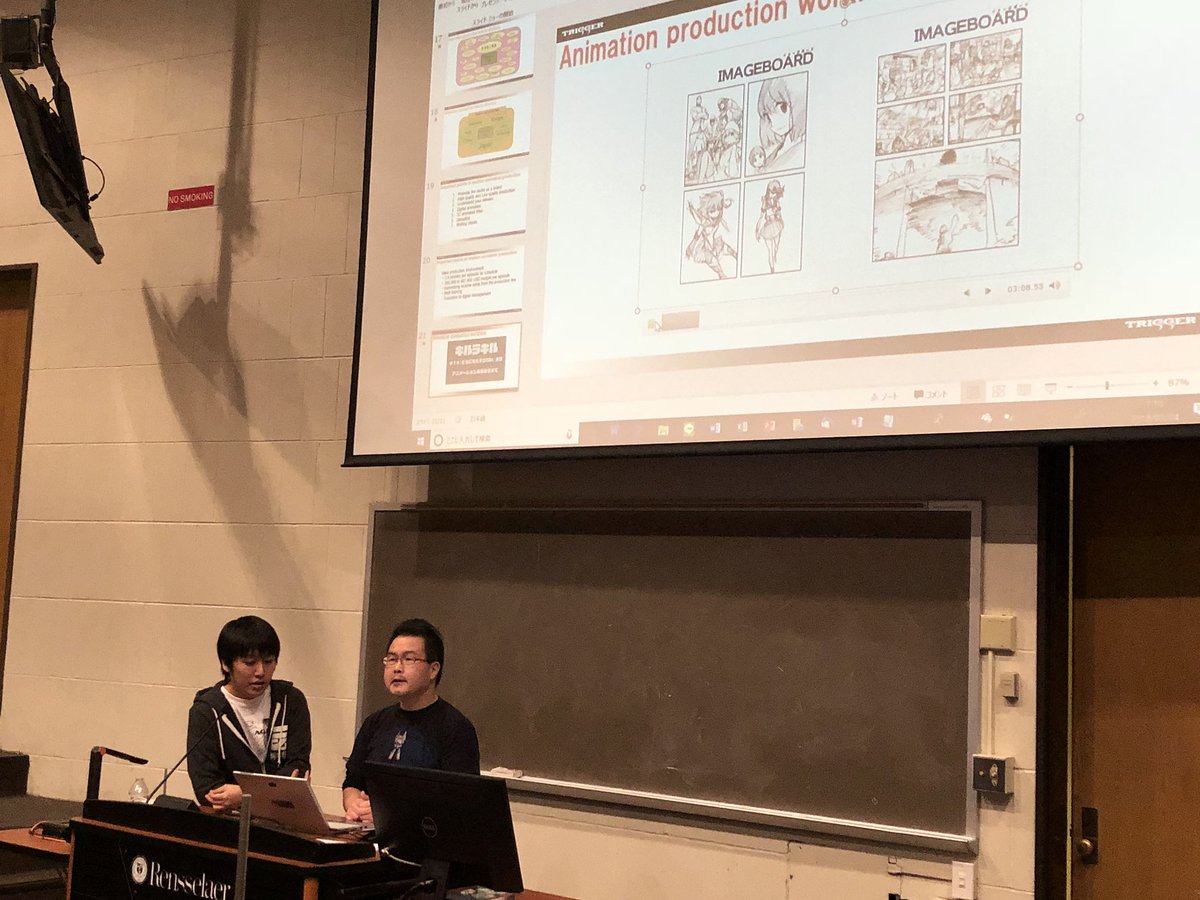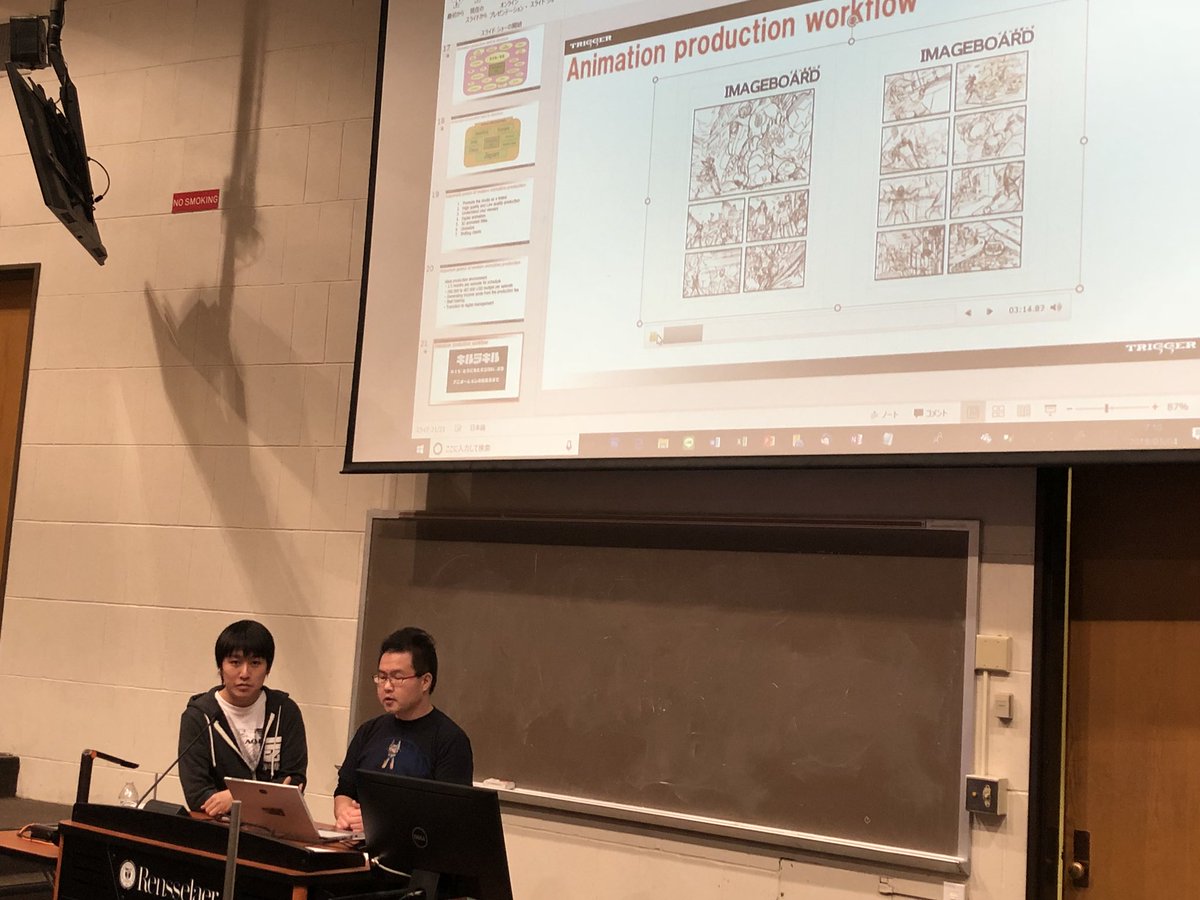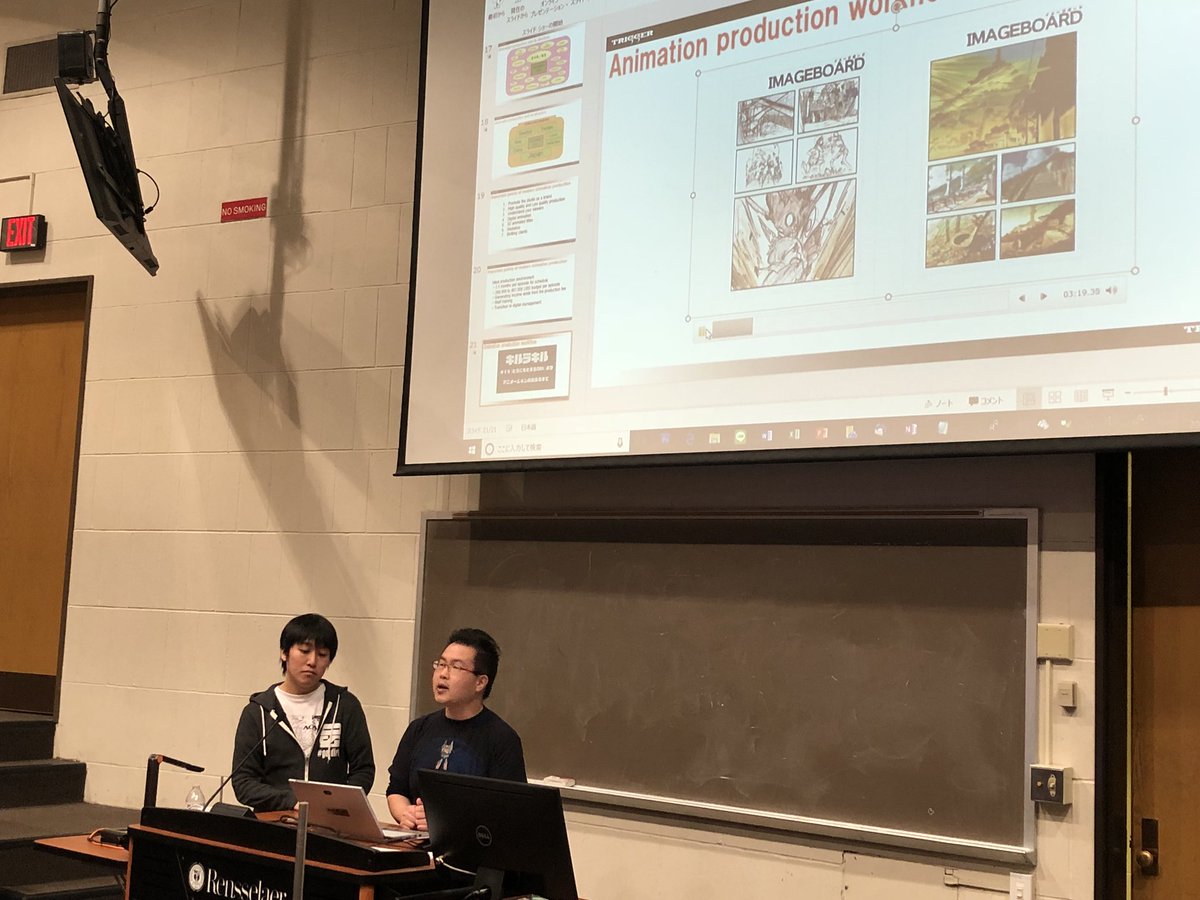Gradual shift to digital animation.
Fukuoka branch specializes in digital animation.
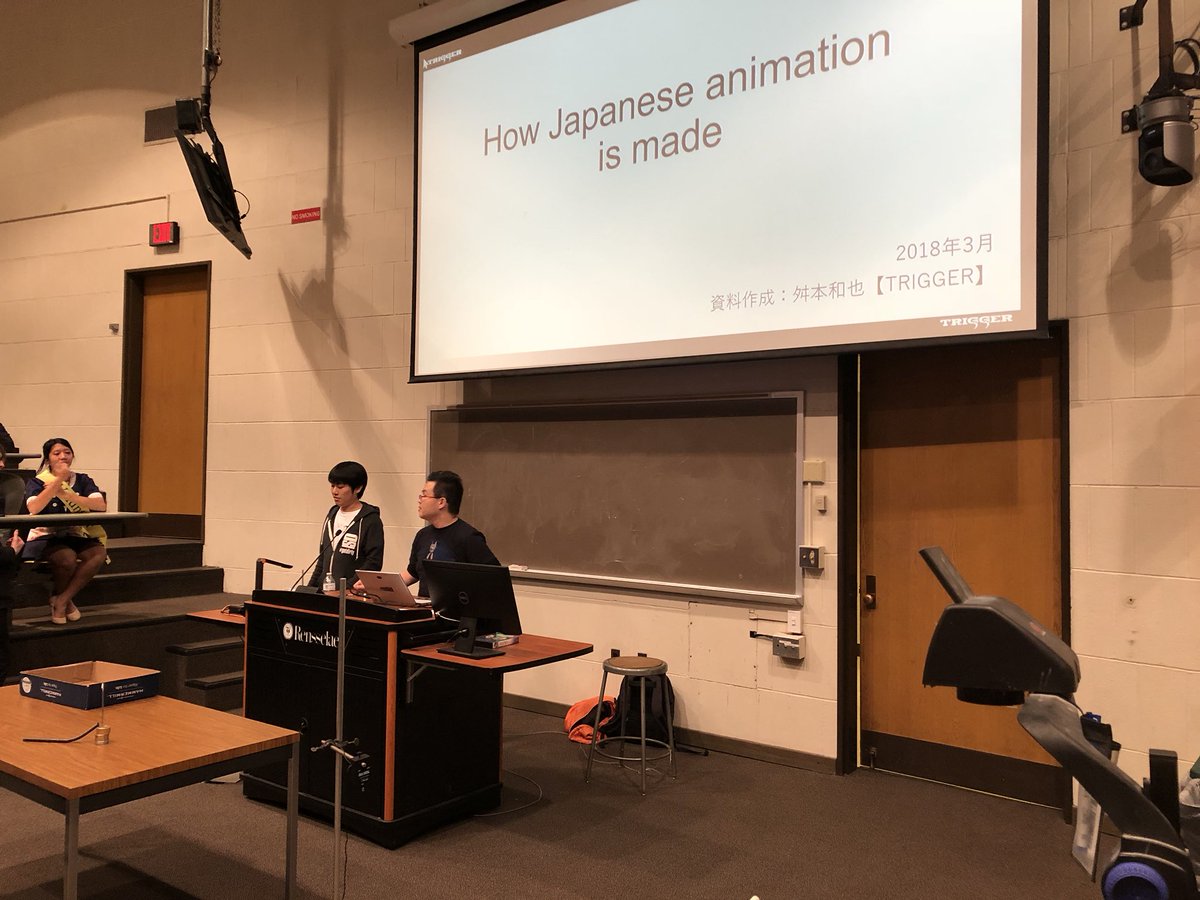
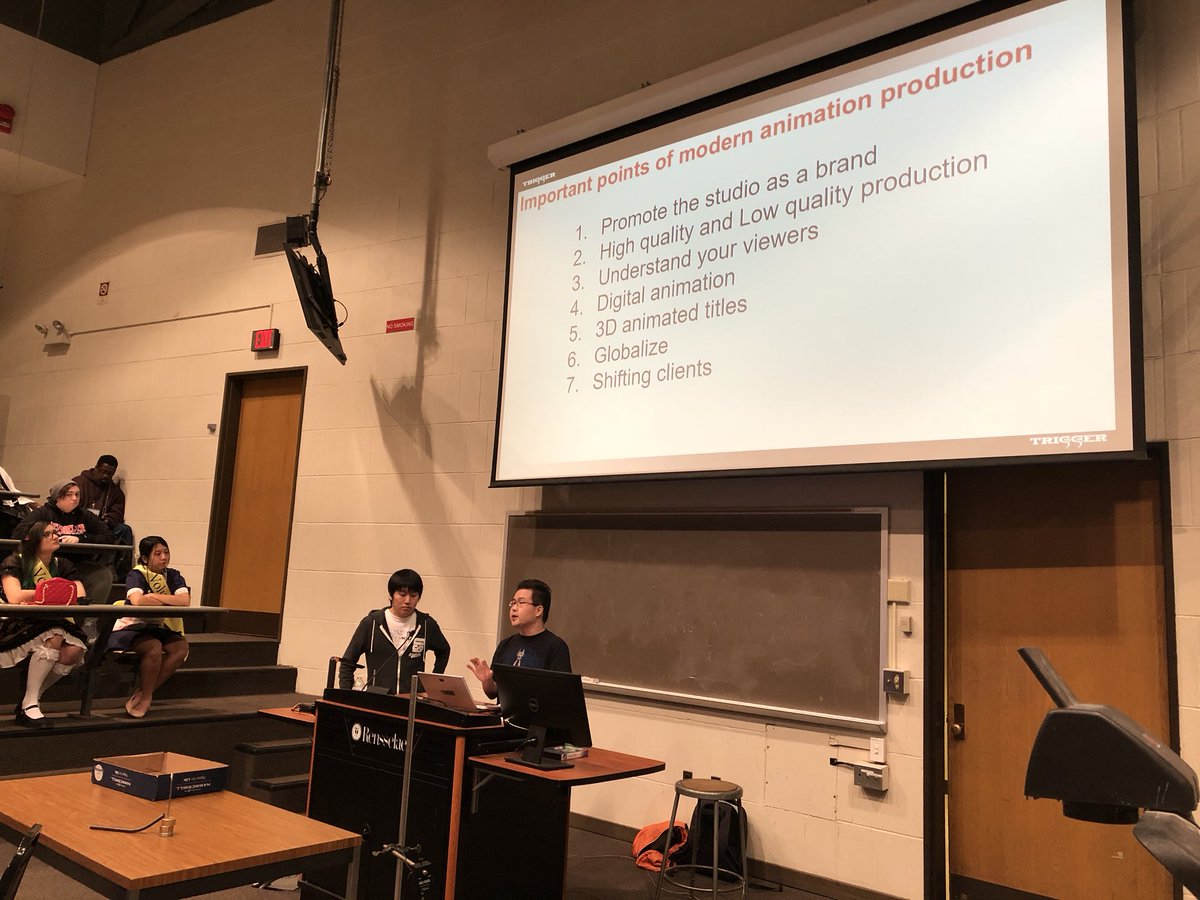
There’s no template for a project pitch.
Mainly want to convey how the project will be profitable. Two main points for KLK’s pitch was staff listings and the designs.
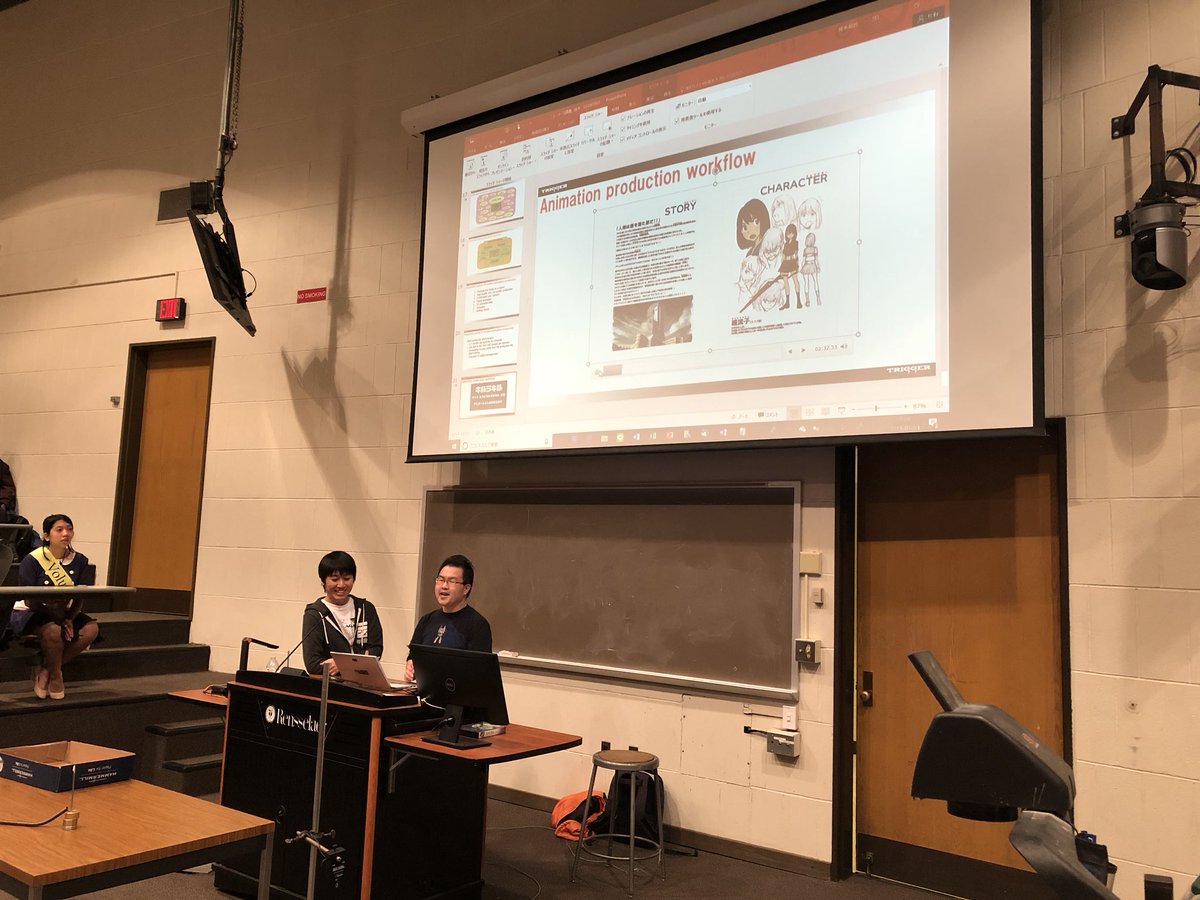
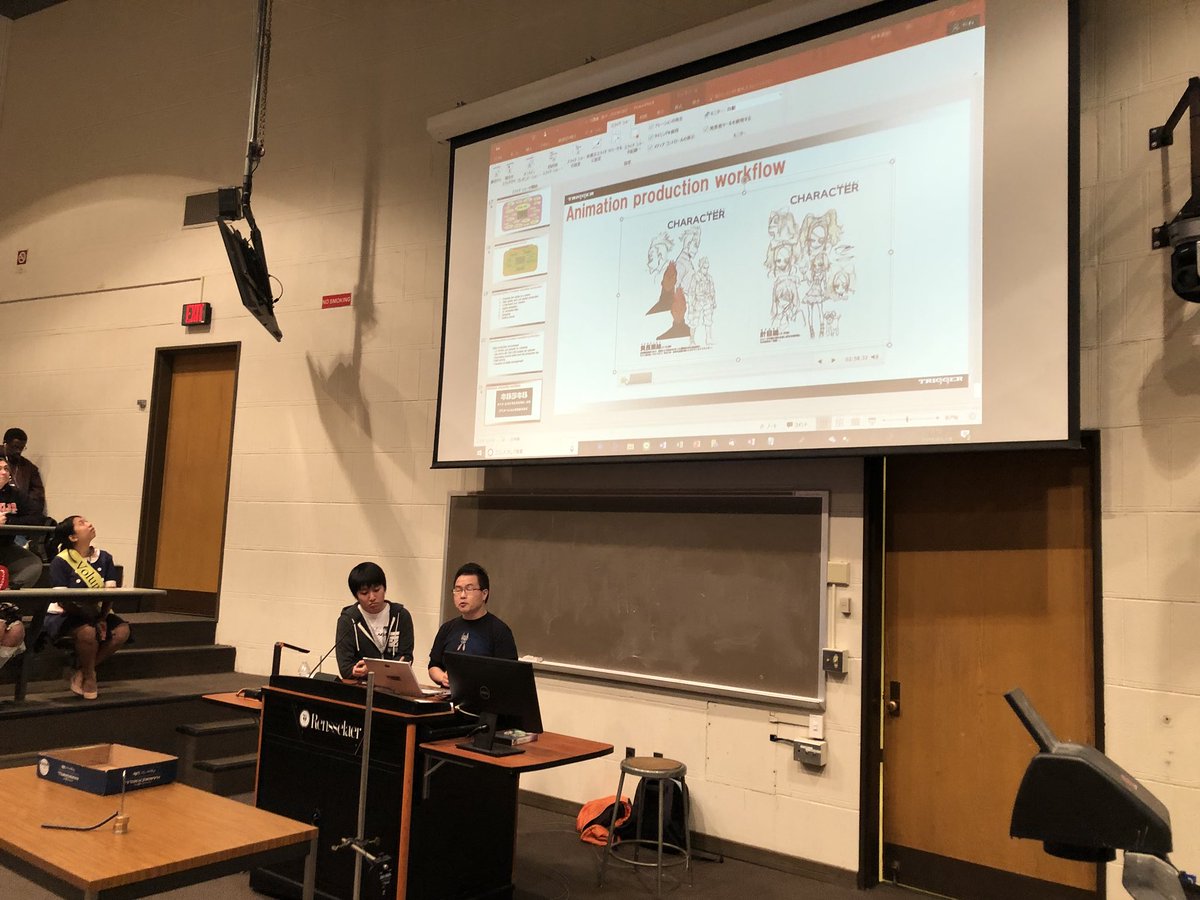
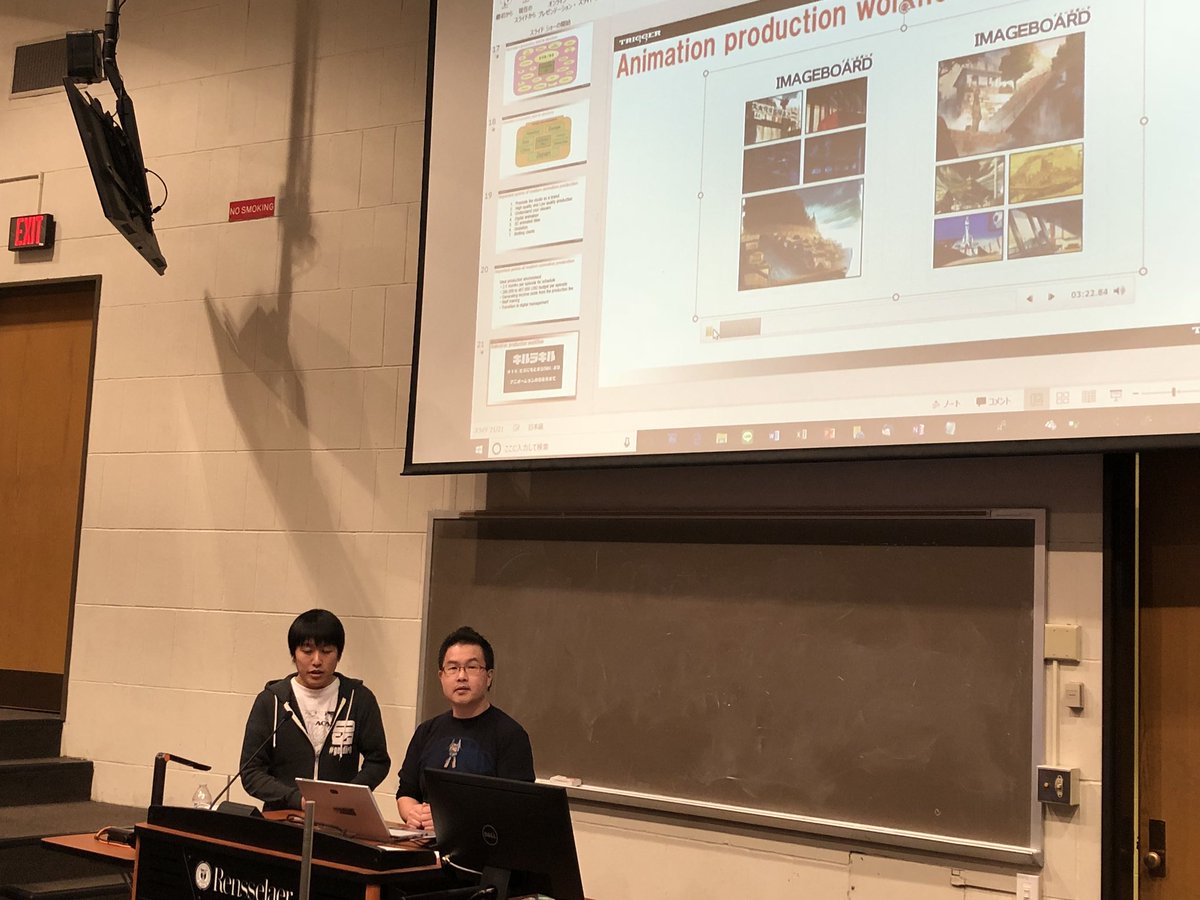
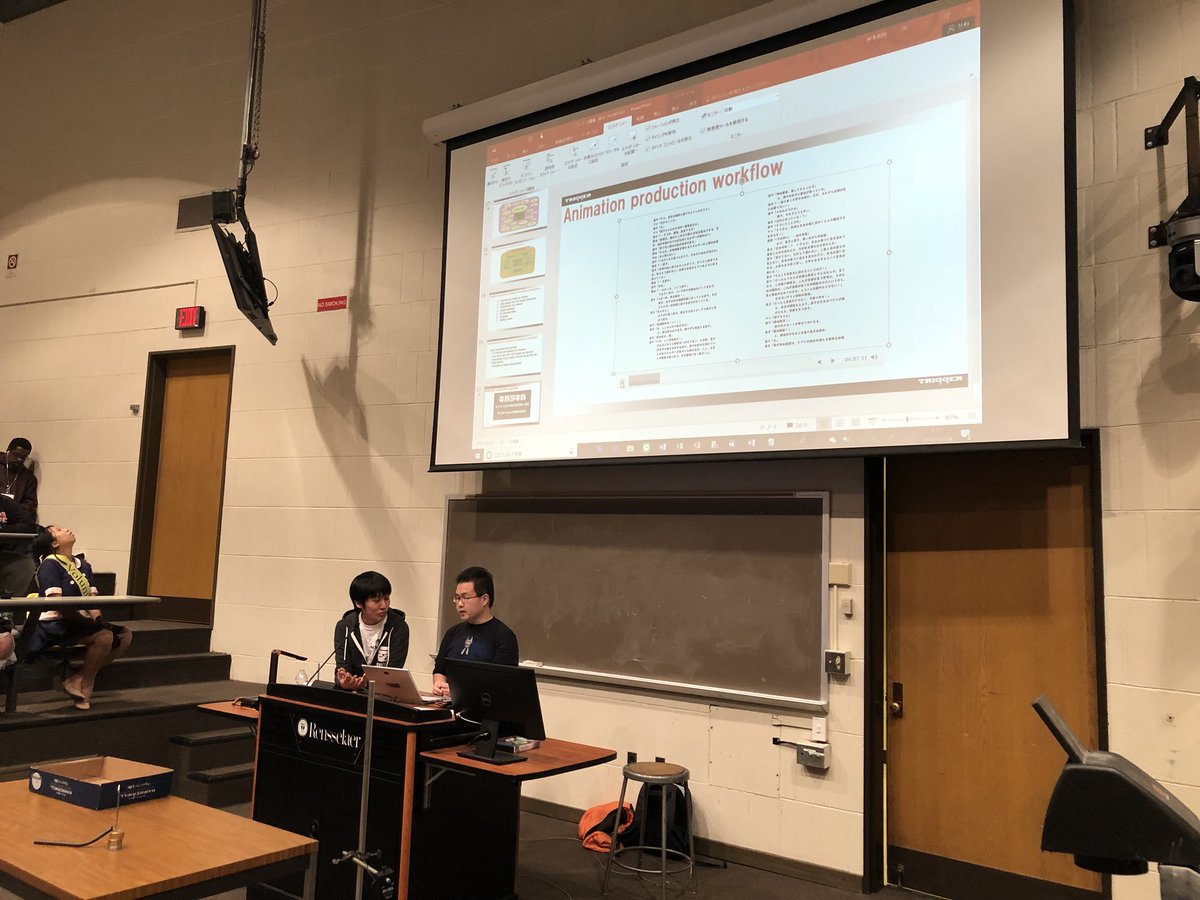
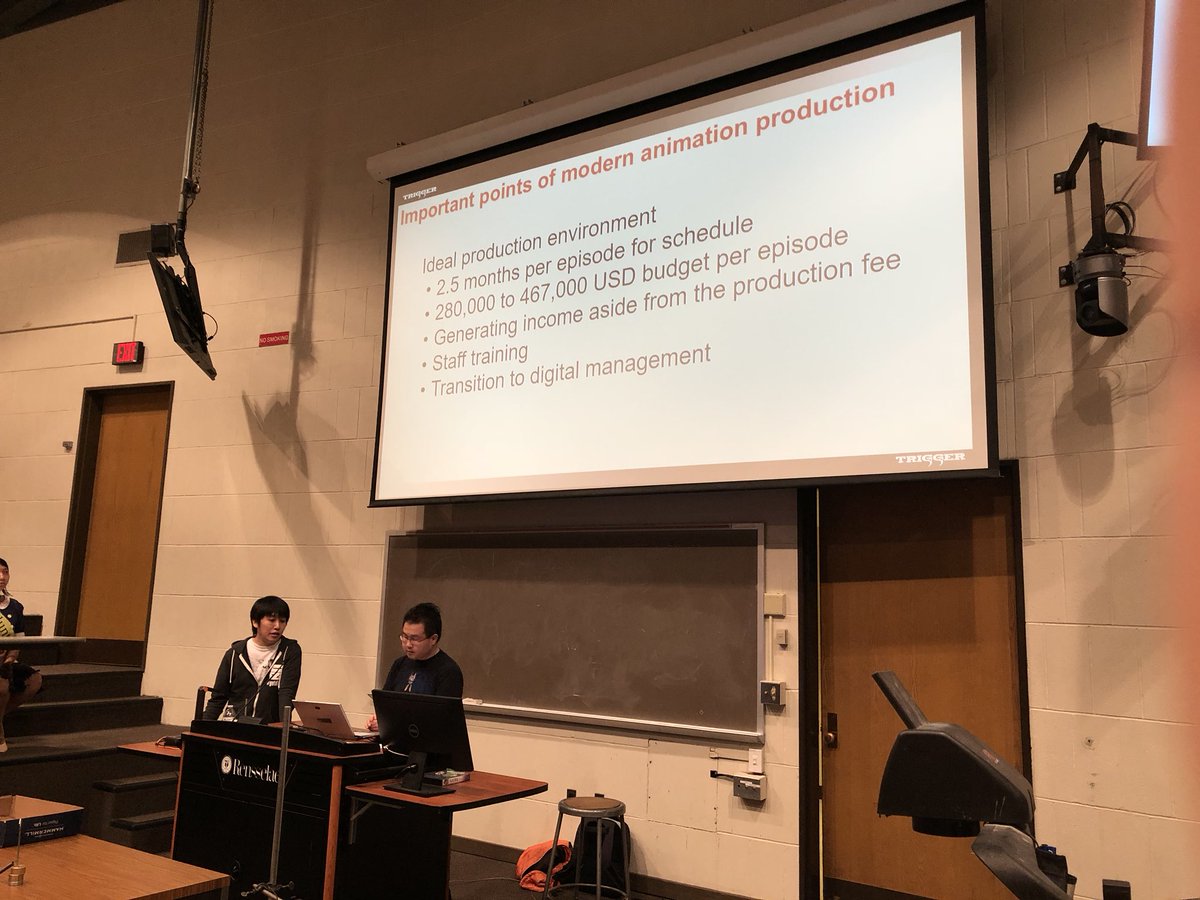
60-70% of how an episode turns depends on the storyboard.
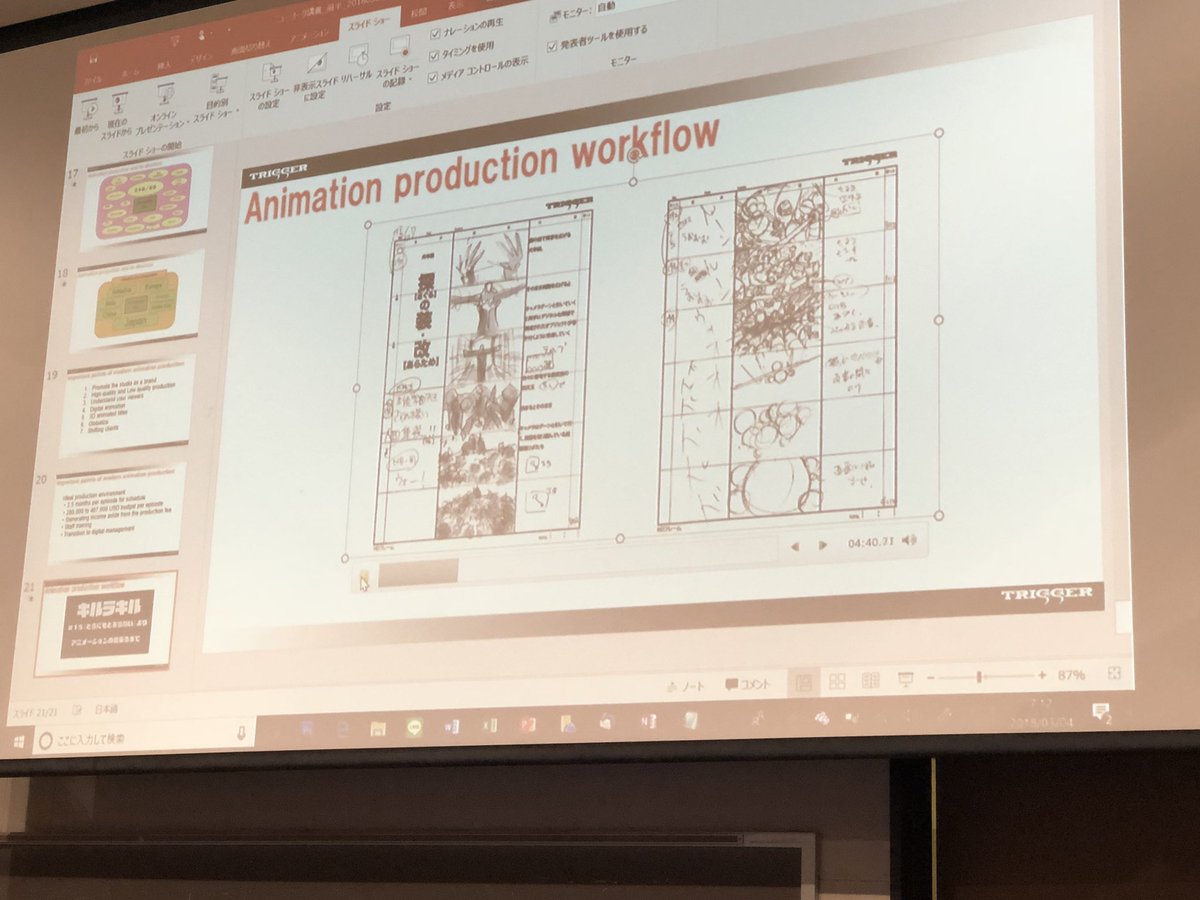
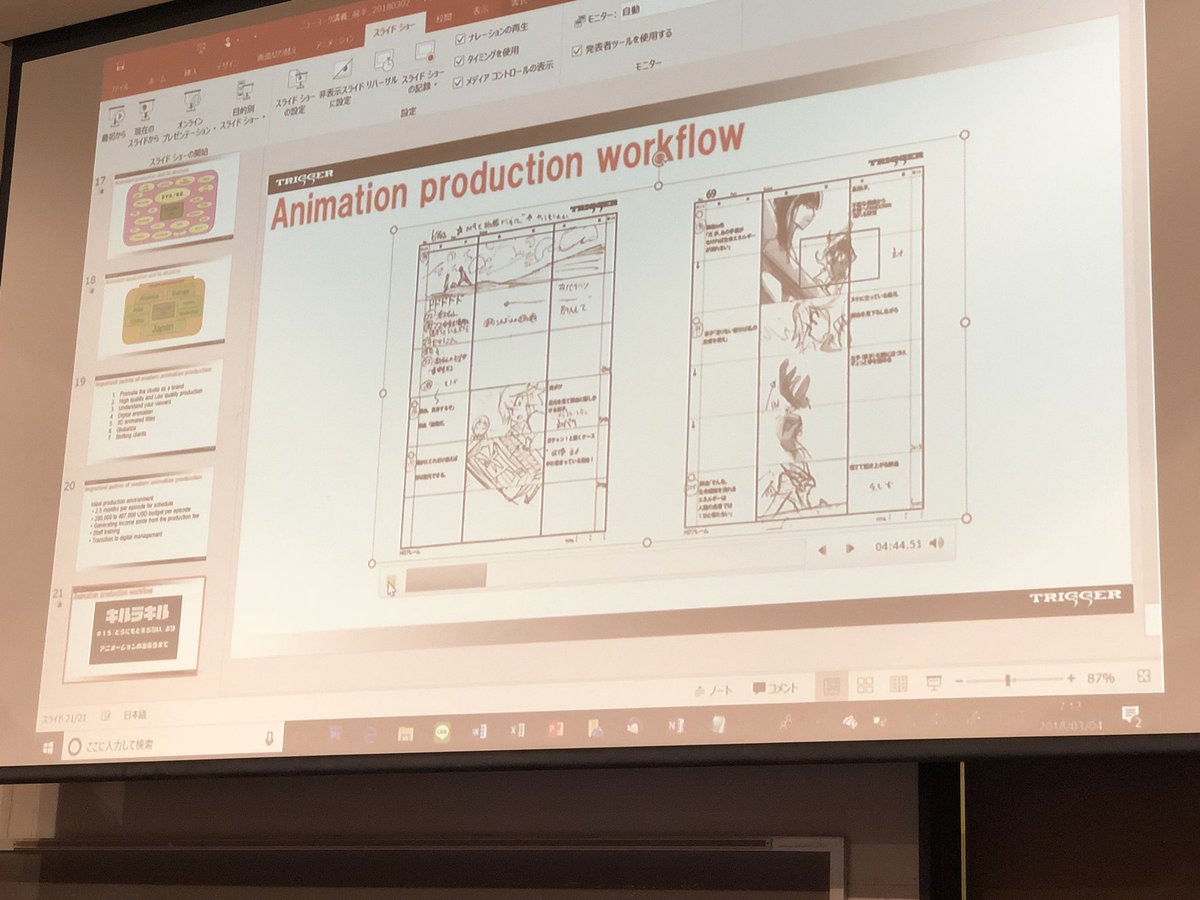
There are also background reference sheets being made concurrently (art setting?). If fantasy/anime original title, much harder to produce, especially backgrounds.
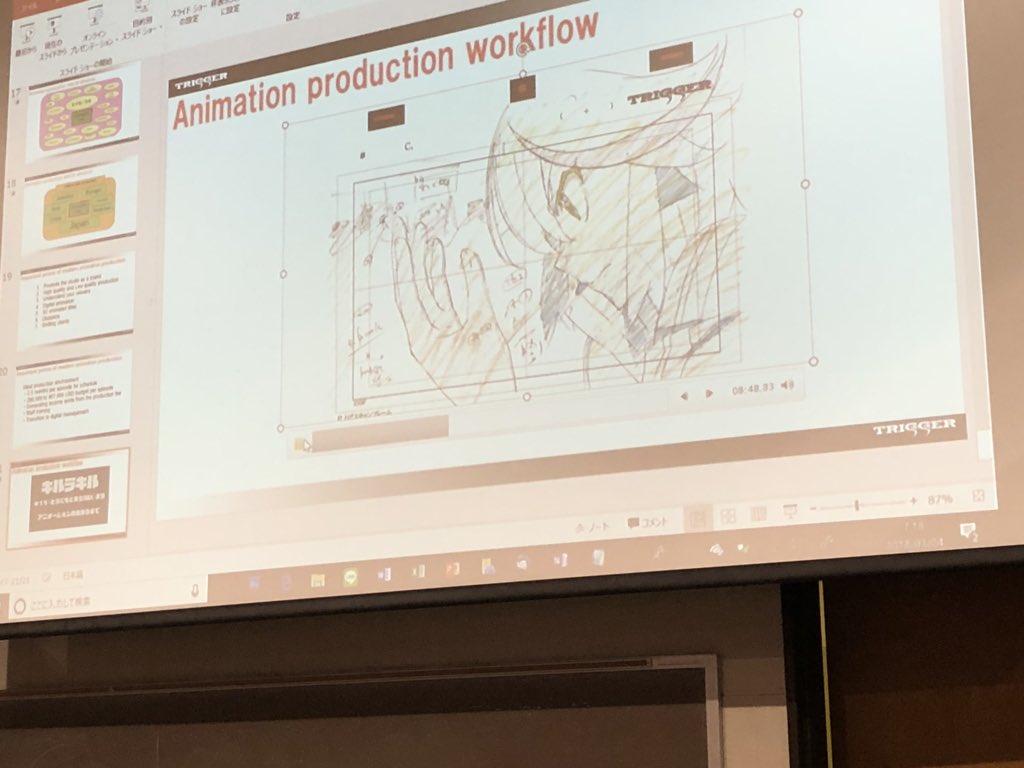
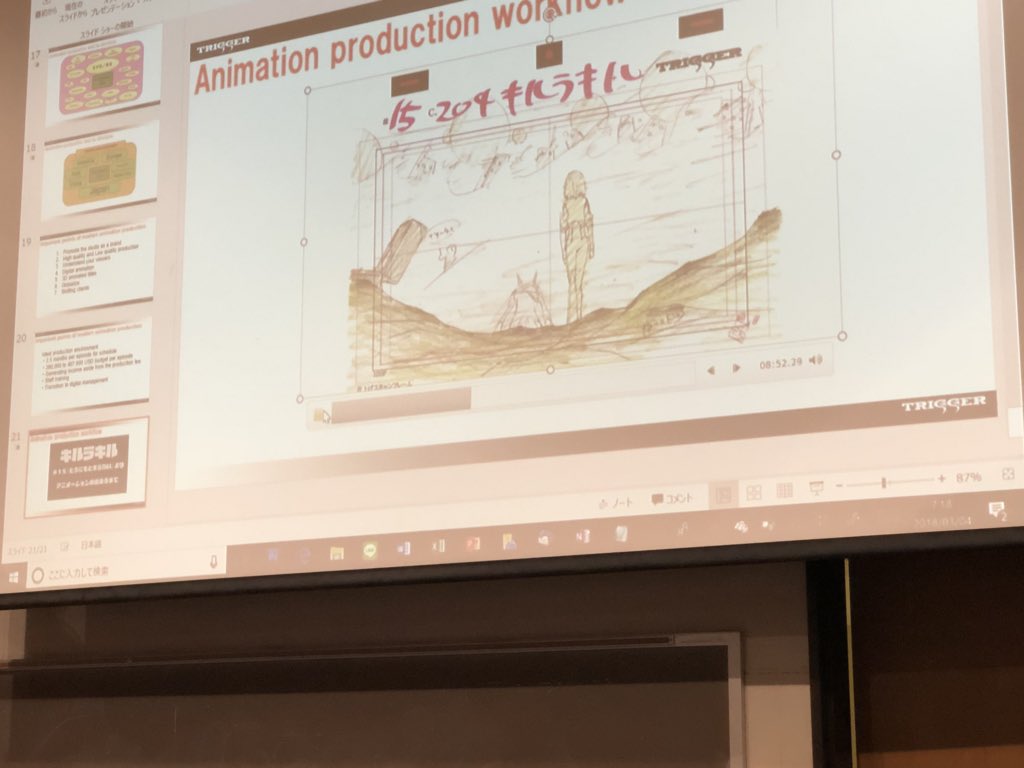
A regular anime will have a set list of about 30 songs but a 2 cour might have 40-50. Process will take about two to three months after storyboard is provided.
This was Little Witch Academia’s preproduction broken into four areas. The difficulty arises in balancing and interconnecting all four groups and why show productions take so long.
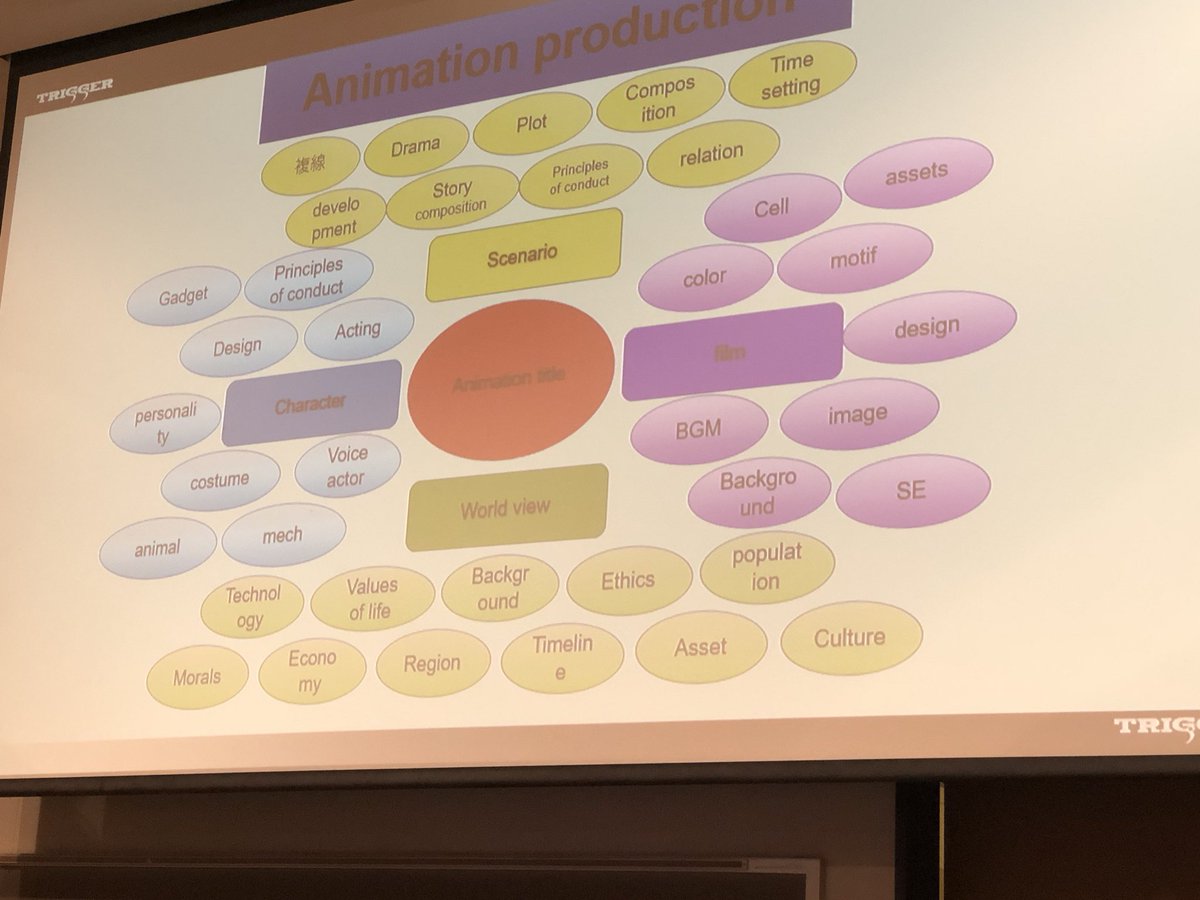
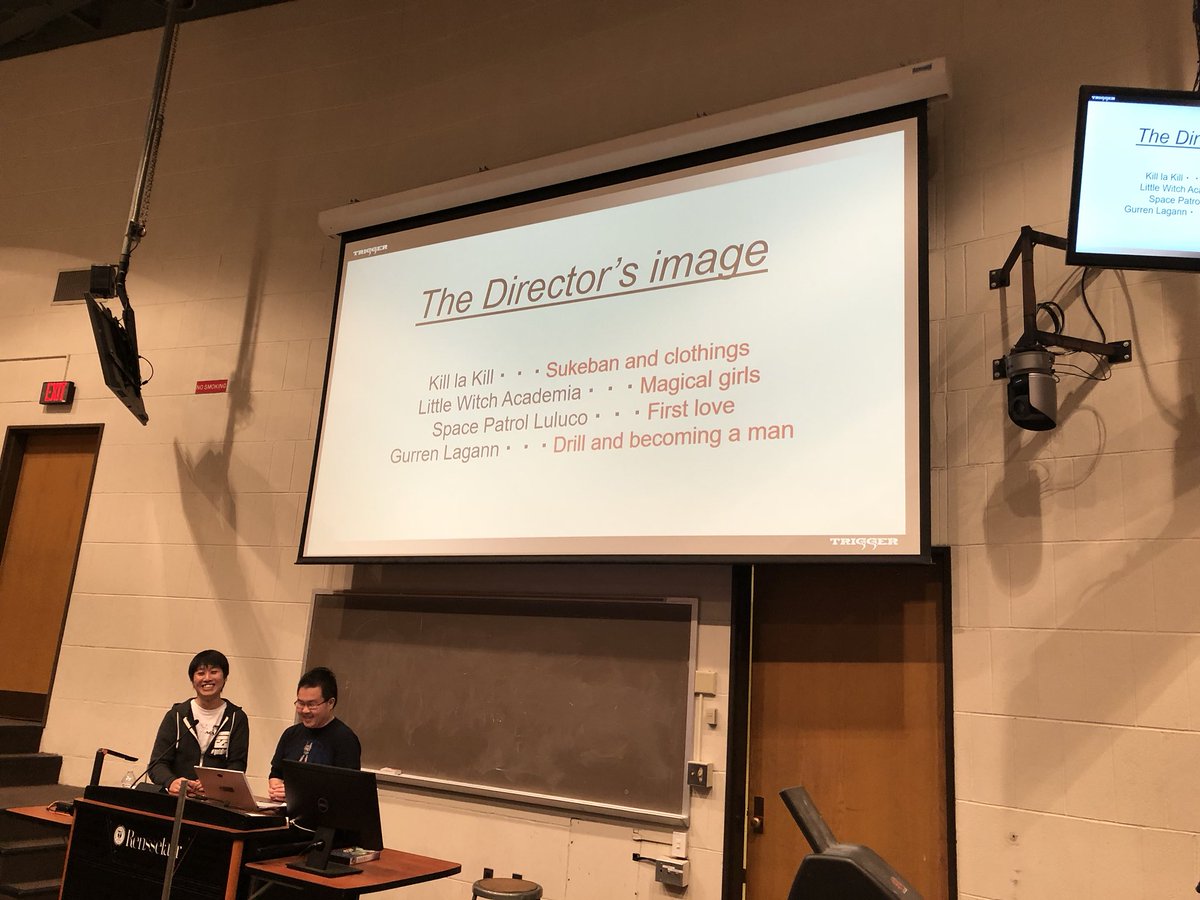
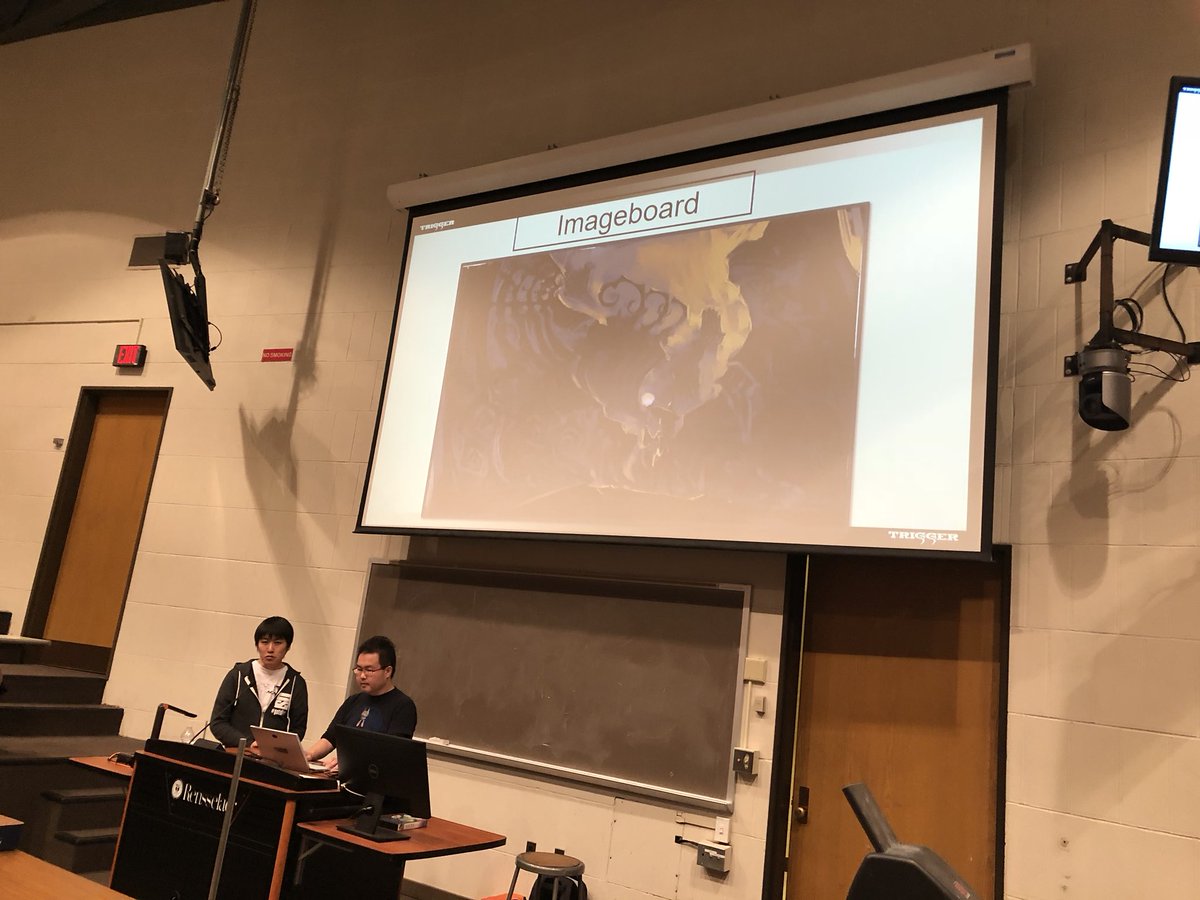
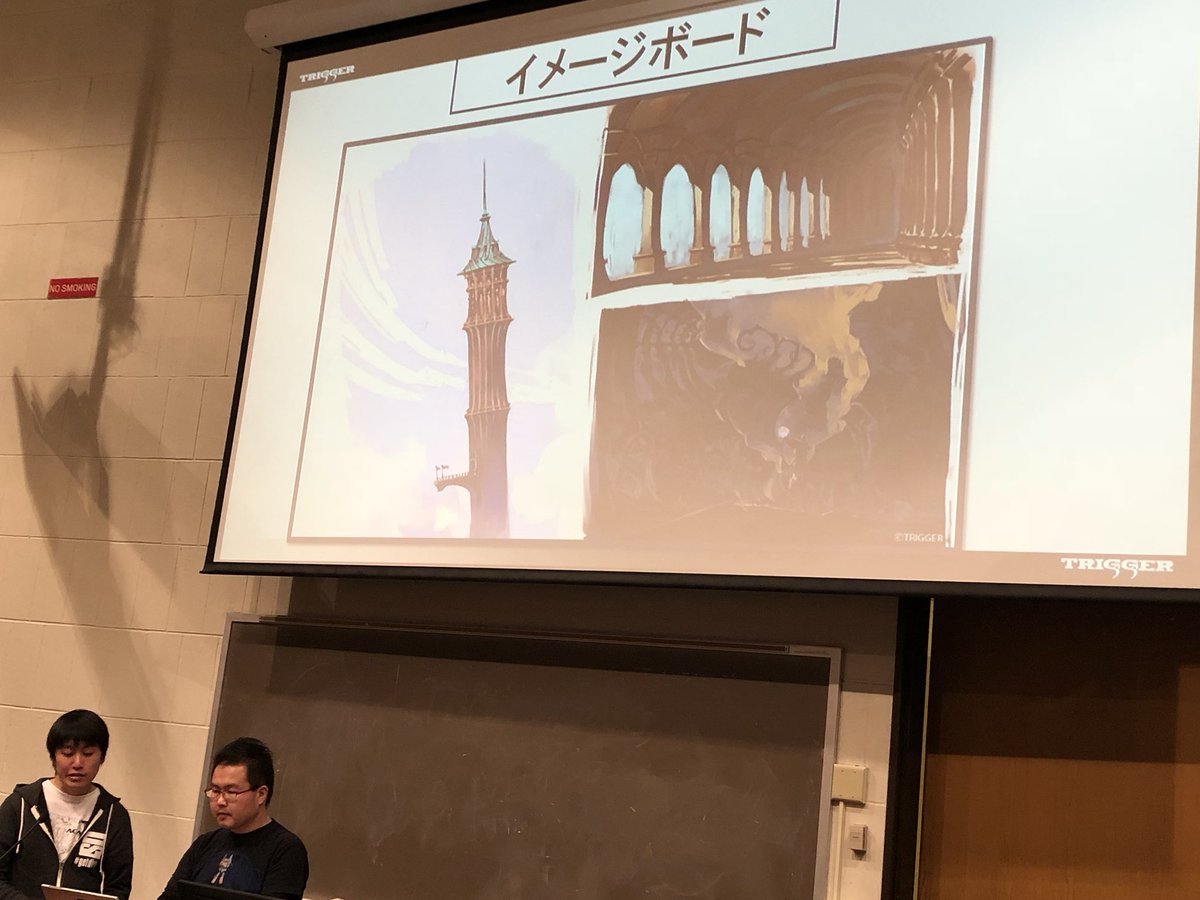
For storyboard, they would like multiple people working on storyboards but due to budget, only have one person.
Hypothetically might interview an outside expert, probably case for multiple series and studios.
Takes about 3 months for them to deliver an episode (I guess after storyboarding is finished).
Thank you to @kenji2413 for an awesome lecture. Would love to hear more about storyboarding.
If a production committee interferes, it’s usually about the script. After that, they will generally leave the production alone until they receive a product back from the studio and then stuff like retakes might happen.
Attached are more images from the sales pitch.
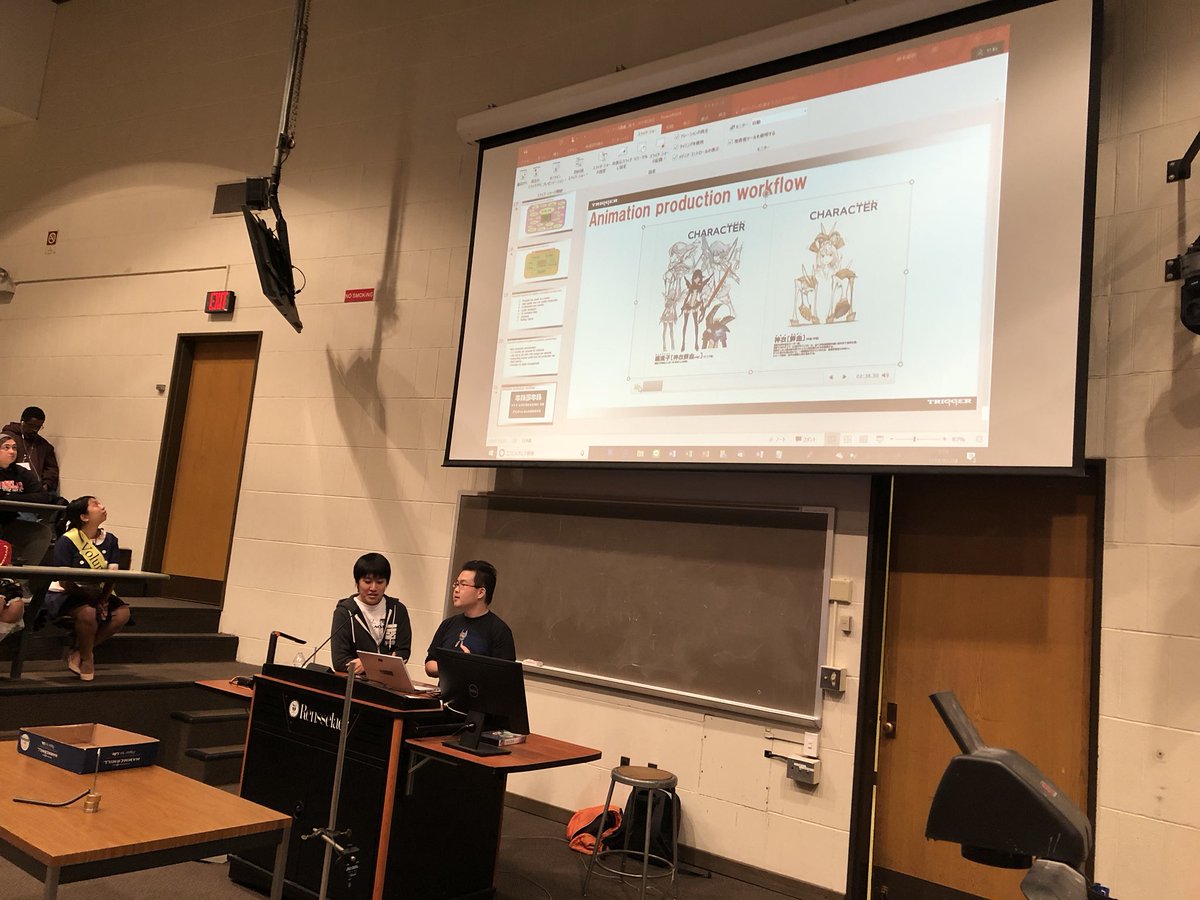
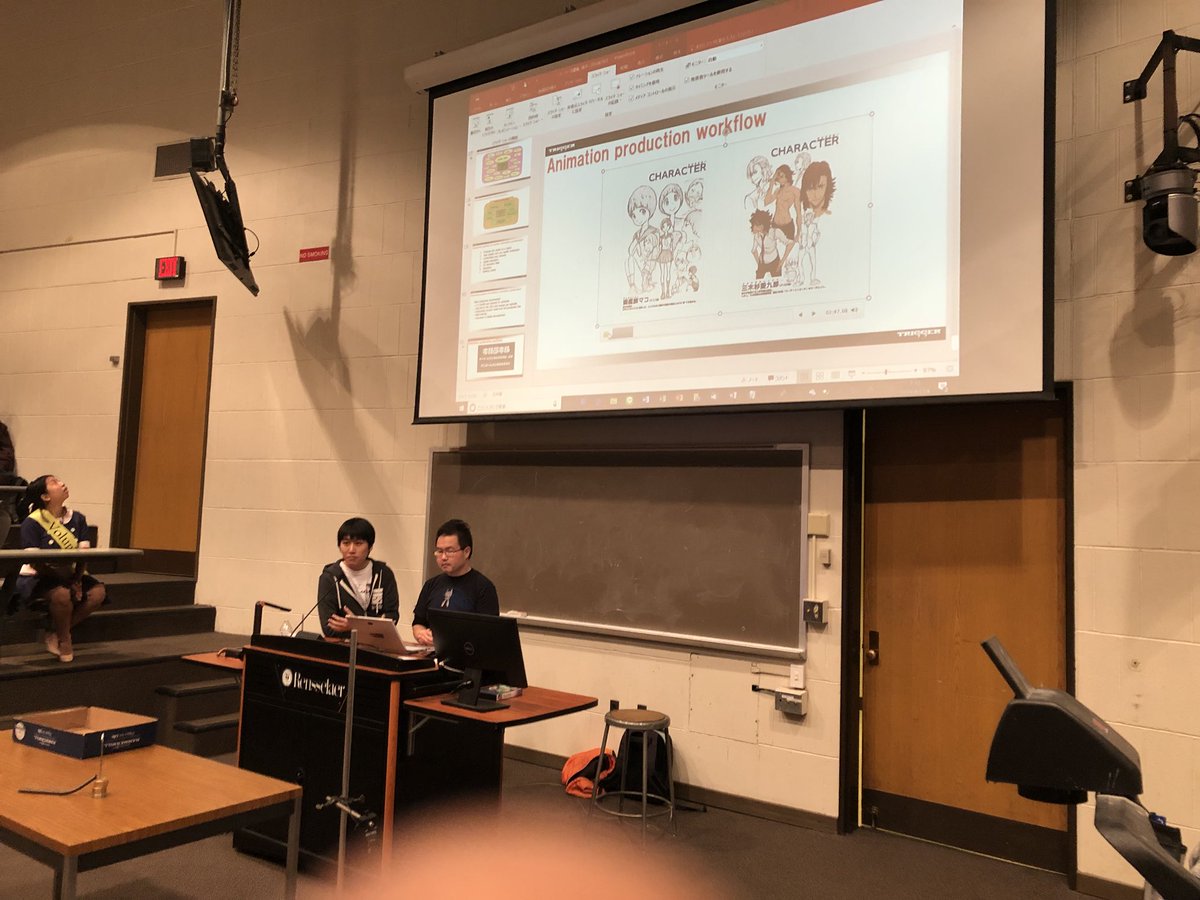
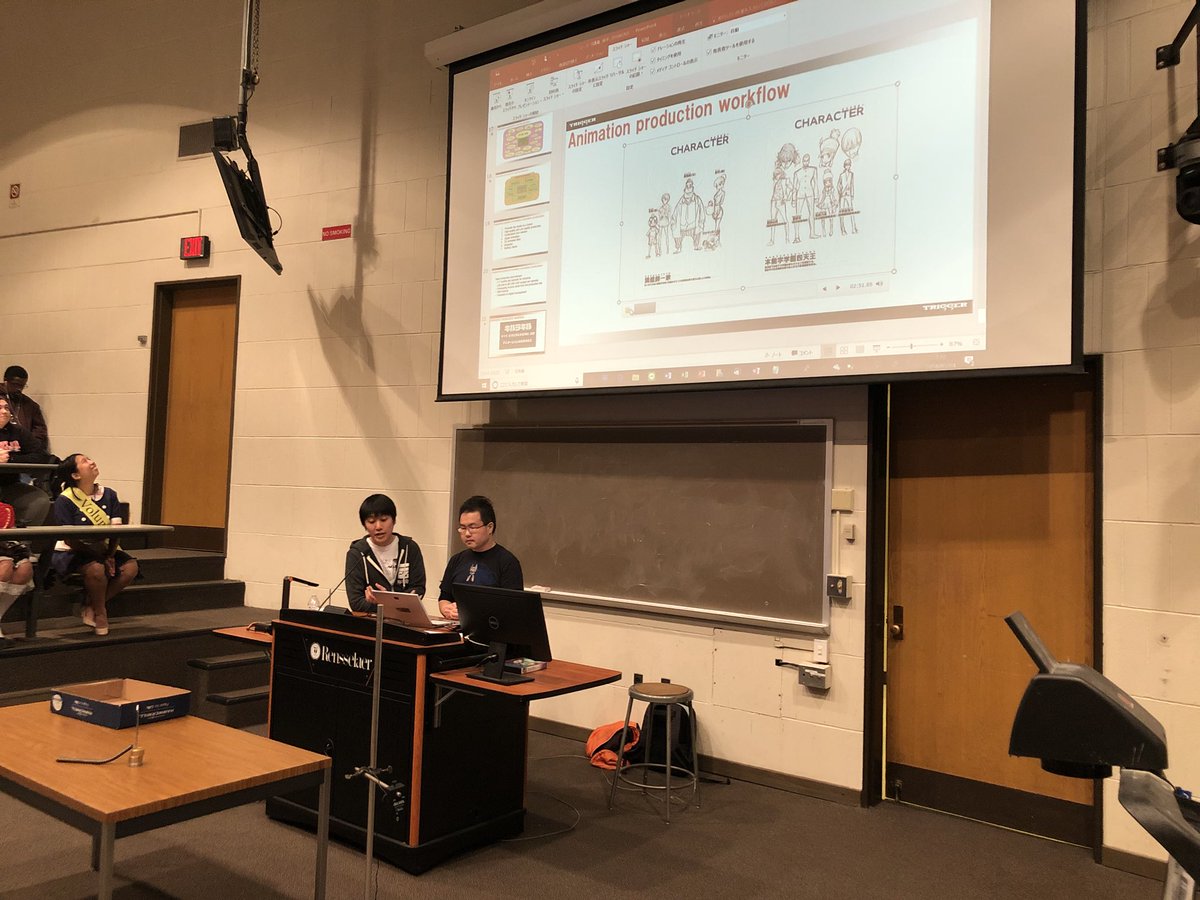
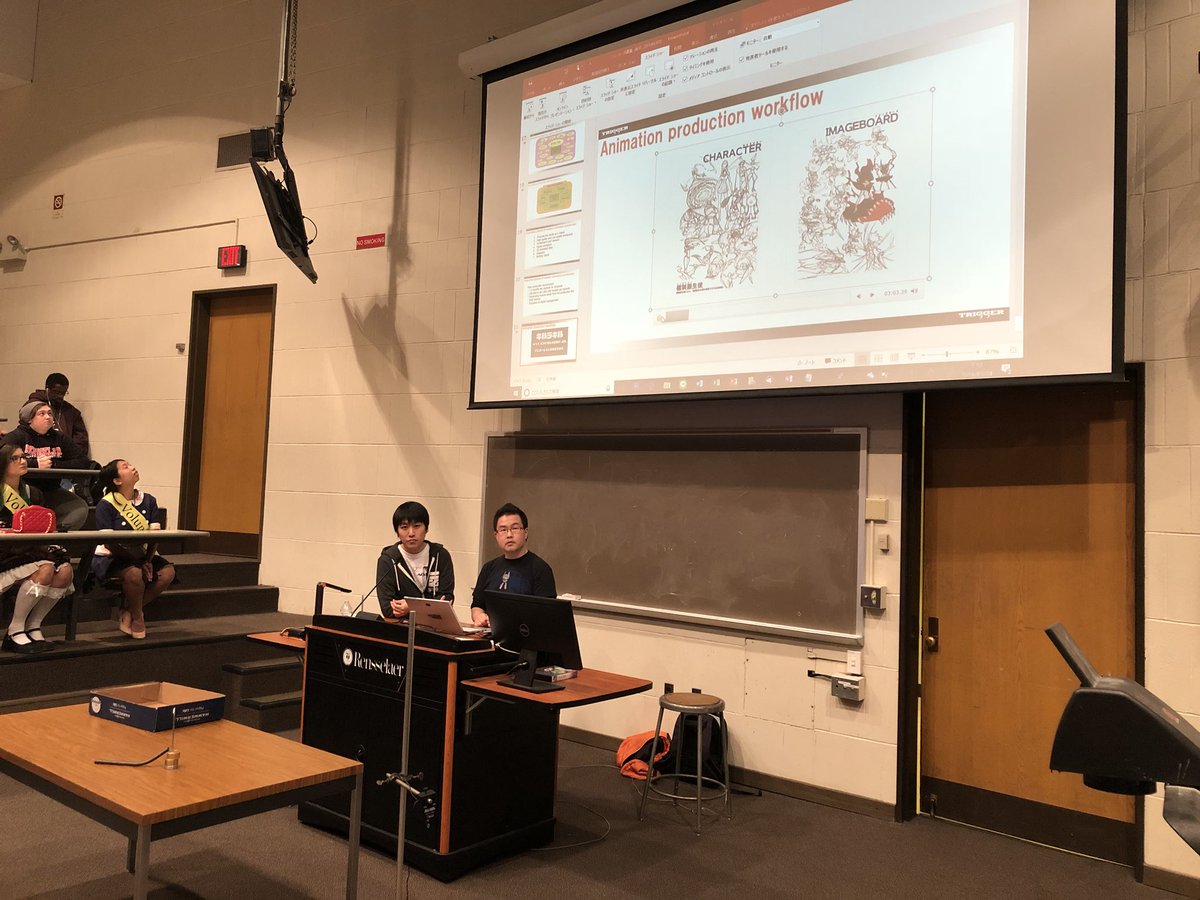
Otsuka-san prioritizes clarity/understandability in the storyboards.
Still some confusion about the 2020 date.
More images from the KLK sales pitch.
